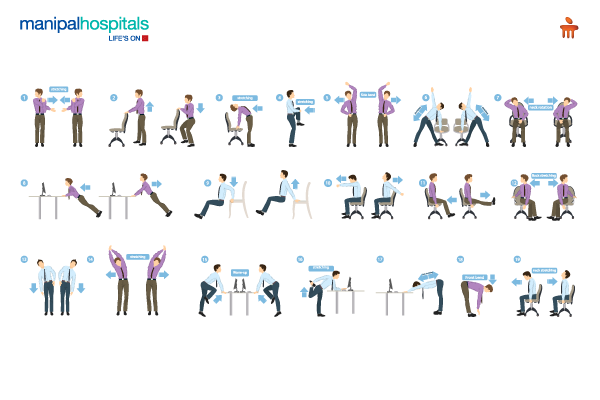
When we think about back pain, we often imagine elderly people dealing with stiff joints or arthritis. Surprisingly, back pain has become a growing concern among young adults too. College students, working professionals, and even fitness enthusiasts are finding themselves struggling with aches and stiffness that interrupt daily life.
In the digital age, long hours in front of laptops and mobile screens, reduced physical activity, and unhealthy sitting habits are major reasons behind this trend. But beyond lifestyle, there are also medical causes that explain why someone in their twenties or thirties may wake up with persistent discomfort.
Let’s take a closer look at the most common causes of back pain in young adults and why timely medical guidance is crucial.
Synopsis
Herniated Disc in Young Adults
One of the serious but increasingly common issues is a herniated disc in young adults. Discs are soft cushions between the bones of the spine. When a disc bulges out or ruptures, it can press against nerves and trigger pain, numbness, or tingling.
Unlike older adults, where disc degeneration happens naturally with age, in young adults, it usually results from:
-
Sudden injuries while lifting or exercising
-
Incorrect posture during long working hours
-
Sports-related accidents
Imagine a 26-year-old gym-goer who lifts heavy weights without proper technique. The strain can slip a disc, causing sharp pain that doesn’t go away with rest. While scary, with physiotherapy and guided treatment, recovery is very much possible.
Muscle Strain
Not every backache comes from a serious condition. In fact, the most common culprit is muscle strain. This happens when muscles or ligaments overstretch due to sudden twisting, carrying heavy loads, or even sleeping in an awkward position.
Young professionals who jump between desk jobs and weekend workouts are especially prone to this. A day of lifting boxes during a house move or an over-enthusiastic game of football can result in days of soreness. Luckily, most cases improve with rest, stretching, and simple home care.
Sciatica in Young Adults
If the pain isn’t limited to the back but shoots down the leg, it may be sciatica in young adults. This occurs when the sciatic nerve is compressed, often due to a herniated disc.
Symptoms often include:
-
Sharp or burning pain from the lower back down to the leg
-
Weakness in one leg
-
Tingling or “pins and needles” feeling
Sciatica is not something to brush aside, as it can worsen if untreated. The right diagnosis and therapy can help restore normal function.
Spinal Misalignment
Your spine is designed to have natural curves, but when it shifts out of its proper position, spinal misalignment occurs. This can result from poor posture, accidents, or congenital conditions. Misalignment places uneven pressure on muscles and joints, leading to chronic pain and stiffness.
Something as simple as sitting with legs crossed for hours, or carrying a backpack slung over one shoulder, can slowly pull the spine out of line. Regular posture correction and strengthening exercises are vital for long-term relief.
Scoliosis and Back Pain
Another condition often overlooked is scoliosis and back pain. Scoliosis causes the spine to curve sideways, creating an “S” or “C” shape. While it usually develops in adolescence, young adults may continue to struggle with it if not properly monitored.
Mild scoliosis may not cause much discomfort, but in some cases, it leads to uneven muscle pressure, resulting in back pain and fatigue. A combination of medical evaluation, targeted exercises, and sometimes braces or surgery is needed for effective management.
Degenerative Disc Disease
Though it sounds like something that should only affect the elderly, degenerative disc disease can appear in young adults too. This happens when spinal discs lose their cushioning ability, leading to stiffness, pain, and reduced flexibility.
Athletes, gym trainers, and even those with a family history of disc problems are at higher risk. While the condition cannot be completely reversed, early intervention can slow its progression and help patients maintain an active lifestyle.
Poor Posture Back Pain
Perhaps the most relatable cause is poor posture back pain. In today’s world, “tech neck” and slouched backs are becoming the norm. Long office hours without breaks, working from bed, or bending forward to look at phones all strain the spine.
Over time, this creates muscle imbalance and persistent pain. Small changes—like sitting upright, adjusting desk ergonomics, and stretching regularly—can make a big difference in preventing chronic problems.

A Real-Life Example
Take the case of Meera, a 28-year-old teacher. She spent hours grading papers and preparing lessons on her laptop, often while sitting on the bed with a bent posture. Over months, her mild discomfort turned into radiating pain down her legs. After consulting specialists at Manipal Hospital Ghaziabad, she was diagnosed with sciatica linked to a herniated disc.
Her treatment plan included physiotherapy sessions, posture correction strategies, and lifestyle changes like using a supportive chair. Within weeks, she noticed significant improvement. Today, she maintains a healthy spine by incorporating stretches and mindful sitting habits into her daily routine.
Why Early Attention Matters
For young adults, ignoring back pain often feels easy after all, they are otherwise healthy. But untreated pain can worsen, leading to complications like nerve damage or restricted movement. Seeking timely advice from experts ensures accurate diagnosis and proper treatment, preventing future suffering.
Hospitals like Manipal Hospital Ghaziabad combine advanced imaging, personalised rehabilitation, and expert consultations to help patients regain strength and return to their active lives.
Tips to Protect Your Back
-
Strengthen your core muscles with regular exercise.
-
Avoid sitting for more than 30–40 minutes at a stretch.
-
Use ergonomically designed chairs and desks.
-
Stay active—walking, swimming, and yoga are spine-friendly.
-
Always lift heavy objects with your knees, not your back.
-
Keep your weight in check to reduce pressure on the spine.
Conclusion
Back pain in young adults is not something to ignore or dismiss as “just tiredness.” From herniated discs to poor posture back pain, the reasons are varied but manageable with the right approach. Early medical care, lifestyle corrections, and healthy habits can help prevent these issues from becoming lifelong struggles.
With proper guidance, young people can reclaim their mobility and continue leading energetic, pain-free lives. Book an appointment with our orthopaedic expert today!
FAQ's
Muscle strain and poor posture are the leading causes, followed by herniated discs.
Mild cases may improve with rest and physiotherapy, but severe ones need medical care.
Not always—mild scoliosis may be painless, but moderate cases often lead to discomfort.
Exercise regularly, maintain good posture, and avoid lifting heavy weights incorrectly.
If pain lasts more than a week, radiates to the legs, or causes weakness, seek medical help.





















 6 Min Read
6 Min Read

















